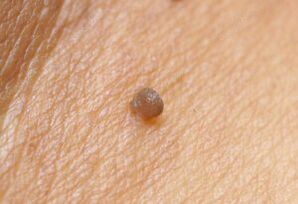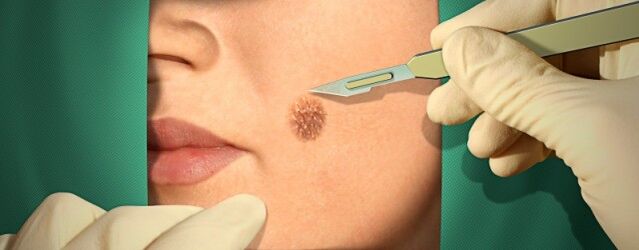
Many infections do not cause symptoms in healthy people.The immune system prevents the activity of the virus, so a person becomes an infection.At the same time, germs that others occur even with complete clinical ability, because the virus particles are contained in the biological liquid of the patient.The hidden infection may be the main cause of the disease's significant spread: the patient does not undergo timely testing and continues to infect others unconsciously.
Papilloma virus in humans (HPV) can be called a great example of a hidden transmission agent.Most people are infected at least one type of HPV throughout their lives, but the clinical manifestations of the disease do not occur in any case.Doctors believe that increased risk of malignant tumor formation for complications of infection.Moreover, patients with immunodeficiency often have such negative consequences of the disease.The theme medicine helps to inhibit symptoms of HPV infection.Timely vaccinations are also recommended.
More information about the disease
Papilloma virus in humans is the pathogen of infection that affects the skin and mucous membranes of the organs.The main manifestation of the disease is the growth of tumors in the area of the human area, the genitals of the oral cavity and the throat.In some cases, sharp papillae are formed in nonspecific places, such as the skin of the lower and top limbs.The localization of warts depends on the type of HPV.However, in most people, infections lead to hidden infections, with a reduction in immunity, the virus begins to show its poison.In some cases, independent immune cells destroying pathogens within 3-6 months after the body invasion.
HPV infection is the most common sexually transmitted disease.Such indicators can be explained by the virus and the diseases are asymptomatic in most people.The use of condoms does not always avoid infection, so patients can continue to spread the virus even with protected sexual contacts.At the same time, experts have developed vaccines -effectively prevent the development of a form of cancer of HPV.Immunization is shown to girls in teenagers, because protecting against the virus must be imbued before the first sexual exposure.
Virus features
Papilloma virus in humans is a pathogen containing DNA.Unlike bacteria and other microorganisms, the virus can only display their activity after being put into the cage and dip their own genetic information into the core.After that, the affected cell began to synthesize the proteins necessary for the assembly of viral particles.Almost all the representatives of the Papillomavirus family only attacks one type of organism and HPV infection can only occur in humans.
Scientists know more than 600 strains (types) of Papilloma virus in humans, distinguished by genetic information.40 types of HPV are caused by different types of lesions for mucous membranes and skin.At the same time, the classification of cancer causing of strains is important.Therefore, cervical cancer in women often occur with the invasion of HPV 16 and 18. These infectious agents are not always manifested by skin changes.
HPV is standing out in the basic layer of epithelium.The pathogen may exist as an episome that is not related to DNA cells or an integrated form related to the cell's genome.It is an integrated virus that produces the necessary proteins and causes clinical manifestations of the disease.The life expectancy of HPV in the body is not a direct cause of malignant tissue degeneration, however, the transportation of the virus increases the risk of risk factors for cancer.
Infection method
The virus is found in basic epithelial cells, so any microtrauma of the skin and mucous membranes increases the risk of infection.In most cases, HPV is transmitted with vaginal, anus or mouth sex.However, condoms can only be guaranteed by part of the skin surface, however, virus particles can still penetrate the body through other coating.The presence of genital warts tends to transmit pathogens, but the external skin of the gills of the disease is also a source of HPV.
Other transmission paths
- Child infection during childbirth.Children often failed the respiratory tract
- Transferring independent viruses from one part to another
- The sharing of personal hygiene items, including razors, toothbrushes and towels
- Blood transfusion.Recent studies have confirmed the possibility of blood transfusion infections.
- Surgical intervention under conditions
Although the different causes of virus invasion, only the sexual path of HPV infection is clinical.Other sources of infections are characterized by the risk of low pathogens.
Risk factors
In addition to direct ways to transmit HPV, it is also necessary to take into account the role of risk factors.We are talking about the features of human lifestyles and certain physical states.
The main risk factors for infection
- A large number of sex partners.Even with safe sex, an active sex life sooner or later leads to infection.
- Year old.Genital warts in most cases are detected in adolescents and young patients, while the oral cavity and respiratory system are characteristic of children.
- The immune system weakened.Patients with HIV infection or immunodeficiency have a high risk of viral invasion.In addition, HPV is usually symptomatic symptoms after organ transplantation.
- Damage to skin and mucous membranes.Microtraumas facilitates the penetration of the virus into the basic layer of the epithelium.
- Smoking and alcoholism.Bad habits weaken the activity of immunity.
- Venate infection.
In addition, pregnant women are included in the risk of infection.It should be remembered that eliminating trend factors for the disease is effective preventive tactics.

Clinical
The incubation period before symptoms of the disease may last for several months.In immune patients, the body may destroy infections during this time, but the elimination of spontaneous pathogens does not always occur.A person may be infected at the same time.Signs of HPV infection occur when exposed to adverse factors that weaken the immune protection of the tissues.Due to the recurrent course, Condyloma periodically disappeared and formed again.Cancer complications of infection can develop for decades.
The possible consequences of the disease:
- Cervical cancer - malignant neoplasm of epithelium.This type of cancer is only related to the papilloma virus in humans.With timely vaccination, the risk of cancer decreases.
- The plant -Cell cancer of the anus.Such complications can occur in men and women.The initial symptoms of anal cancer include bleeding and itching.
- Violating urinating due to obstruction of the urethra by Condyloma.
- The malignant regeneration of warts in the throat and oral cavity.
Cervical cancer is one of the most common causes of death for women.Because this disease is related to the invasion of the virus, it is necessary to undergo exams at regular exams at gynecologists.Modern vaccines protect women from the most cancer HPV.
Diagnose
Gynecological doctors, urinary doctors, traditional doctors and dermatologists are participating in examination by condil.During the initial appointment, the doctor would ask the patient about complaints, collect Anamnestic data and check the skin formation.Typically, HPV manifestations are easily identified, however, other diseases must be excluded.For this, experts will prescribe research tools and laboratories.
The necessary diagnostic methods:
- Check the tool of the vagina and the cervix (cervical scan).Such a study must be conducted to screen for cervical cancer.During the examination, the doctor may detect many papillomas and areas of epithelial dysplasia.
- Biopsy - Having tissue material in the area changing skin or mucus.A sample cytological study allows you to identify malignant cells.
- Polymerase chain reaction - detects HPV virus particles in the body.Conducting this test gives the doctor the opportunity to determine the pathogens and the virus load.
- Digene test is a high accuracy of DNA of cancer strains of Papilloma virus in humans.Research is used as reliable screening.
Drug treatment
Preparations develop against HPV infection can only eliminate symptoms of the disease and prevent tissue malformations.Completely removing viruses by using drug therapy is impossible.Oral and local agents are specified in the case of high risk of cancer, immunodeficiency and other adverse conditions.If the virus does not manifest by external changes, generally preventive measures.
The appointments may
- Salicylic acid to remove warts.It is not used to treat the skin of the face and genitals.
- Ice cream and ointment contain immune treatment agents.
- Podofilo - A type of ointment with cytological effects.Applying the drug to the affected skin leads to the destruction of pathogenic factors.
- Trichlooroxic acid for chemical care of common warts and genitals.It can cause the local part.
The listed drugs should be used only under medical control.After removing warts, HPV infection can manifest itself again and even spread to other areas.
Surgical treatment

Doctors may provide surgical patients and minimally invasive methods to remove warts.Typically, such methods do not cause complications, but in the first days after intervention, tissue bleeding may occur.
Types of intervention:
- Common surgery removal;
- freeze with liquid nitrogen then destroy the affected tissues;
- electric coagulation;
- eliminate laser papules.;
- Use "knife" radio waves.
All procedures are carried out under local anesthesia.Experts will choose the safest method to treat Condyl.
Forecast
Papillomavirus infection depends on the patient's immunity and a specific virus strain.About 30% of the population has removed the pathogens caused by immunosuppressants.Symptoms are often manifested in pregnant women, children, the elderly and patients with immunodeficiency.
HPV infection is characterized by a recurrent course.Papillomas formed may gradually disappear or spread to surrounding skin.The cancer strains of the virus often affect the mucous membranes of the cervix and the epithelial dysplasia to enhance the effects of risk factors for malignant degeneration, such as smoking and contraceptive use.The tumor can form 10-20 years after invading the virus into the body.
Prevent
The most reliable prevention method is early vaccination.Gardasil vaccine, containing viral proteins and auxiliary components, is effective for HPV 6, 11, 16 and 18 types.If the vaccination is done from an early age until the first sexual exposure, the risk of developing cervical cancer then does not exceed 1%.
Additional prevention:
- Use condoms;
- Only sex with reliable partners;
- Careful personal hygiene;
- Gynecological inspection at least once a year.

























